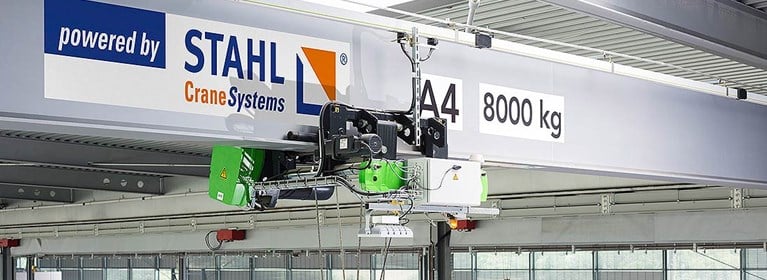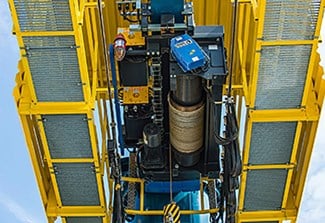Explosion-Proof Wire Rope Hoists Employed Around the World
Mining, Petroleum and Gas |
Crane Systems |
By STAHL CraneSystems |
Dec 18, 2016
Cranes are mostly used in LNG systems for routine maintenance. However, when emergency work needs to be completed on pumps or compressors, it is vital that the crane and hoist are immediately operational and work reliably. For the LNG tank in Finland, it was necessary to develop a special maintenance crane capable of operating in extreme temperature conditions and severe frost. For maintenance cranes on Chinese LNG tanks, hoists with special rope drums had to be designed to fulfill the specific requirements for Chinese LNG systems, including operation in hot environments.
With the special constructions required for LNG projects, STAHL CraneSystems has solutions that fit the applications. The SH Ex and AS 7 Ex wire rope hoists are the basis for customized explosion-proof solutions. With their modular systems, wire rope hoists can be manufactured in various SWL variants and designs. The reliability and safety of the crane systems can only be guaranteed long-term if all important components are easily accessible for maintenance work and readily available spare parts.
Temperatures below –20°C are no rare occurrence in the port of Pori in winter. On the west coast of Finland, an LNG supplier built the country’s first LNG terminal with a capacity of 30,000 cubic meters of liquid gas. The international supplier of chemical, energy, and industrial plants contracted STAHL CraneSystems to develop a crane capable of withstanding the cold. Special cold-resistant steel and heated motors enable use in temperatures between –29 °C and +40 °C. In lower temperatures, the hoist is covered. To guarantee explosion protection according to ATEX 95, thermistors monitor the inside of the explosion-proof enclosure and the motors. Heaters keep the crane in working order even in heavy frost. Only when outdoor temperatures drop below –29 °C or when the sensors inside the enclosure measure temperatures under –20 °C, the crane switches itself off. Additionally, a special coating prevents water in the air and high salt content from harming the crane.
On the maintenance crane, some crane components could be implemented without explosion protection. The area up to two meters above the tank top, which contains the main control system, the crane controls, and power line supply, was classified as potentially explosive. They were implemented for applications in Zone 2 in accordance with EC Directive 94/9/EC (ATEX 95).
It was possible to install the drive of the slewing crane, the travel limit switches, and the main junction box in the safe area. All the electrical components of the wire rope hoist were integrated into the main junction box, making it possible to dispense with the explosion-proof control box.
The new LNG terminal in Shenzhen, China, consists of four 160,000 m3 liquefied gas tanks. Every LNG tank is equipped with a crane to move the liquefied gas pump on the bottom of the tank and lift it out into the open air for maintenance or repair work. Due to the potential explosion risk from evaporating gas, all electrical components on Chinese tanks must be constructed in explosion-proof design, which also applies to the crane technology. The specifications for LNG wire rope hoists in Chinese plants require a ratio between rope diameter and rope drum diameter (D/d ratio) that cannot be achieved with a standard hoist. STAHL CraneSystems has developed rope drums with a larger diameter specifically for these wire rope hoists.
The rope connected to the LNG pump measures 13 mm in diameter. The standard diameter of the drum of the SH 6 wire rope hoist is 356 mm. STAHL CraneSystems welds a drum from the larger AS 7 wire rope hoist on to this standard drum to increase the D/d ratio without complex modification of the design.
North America - EN





